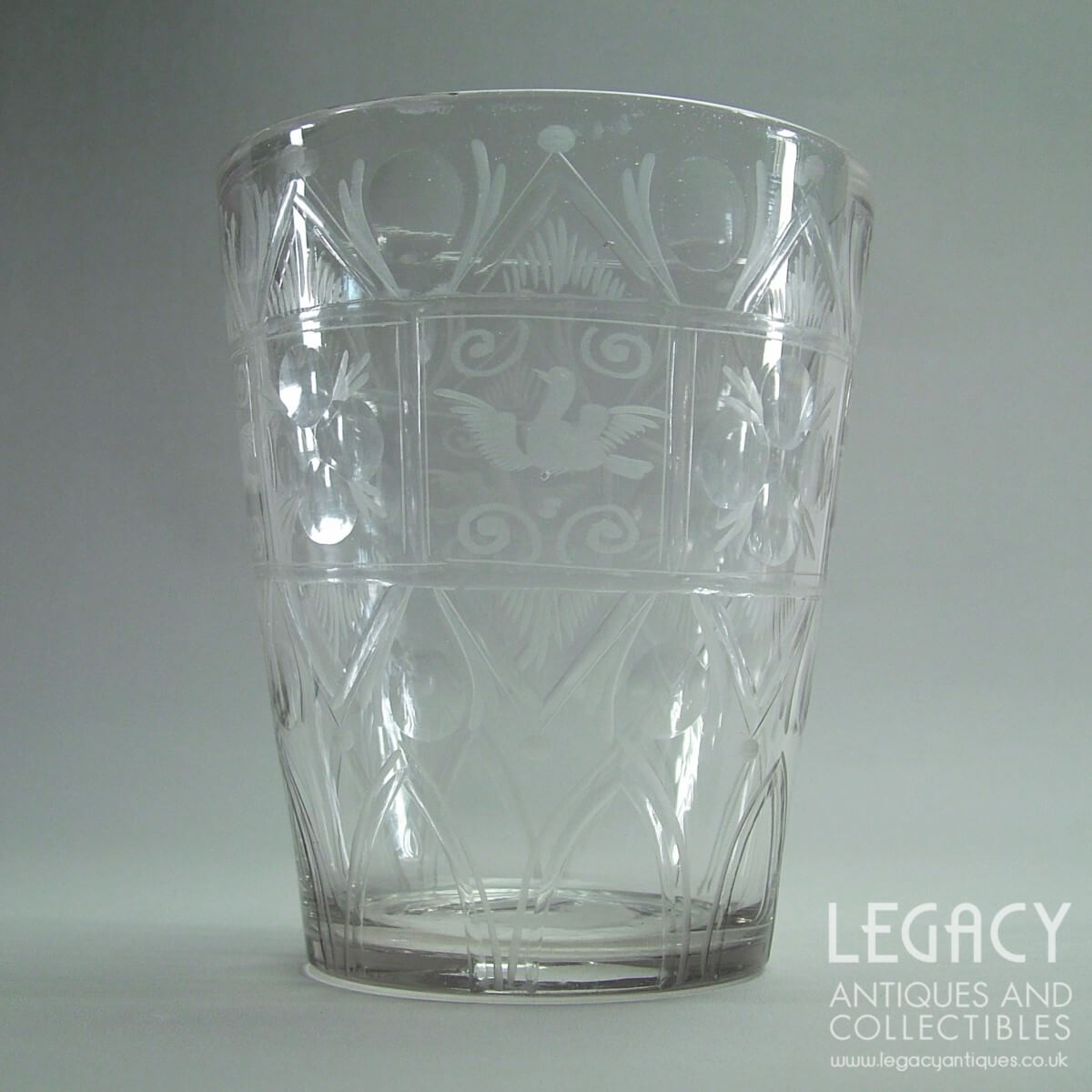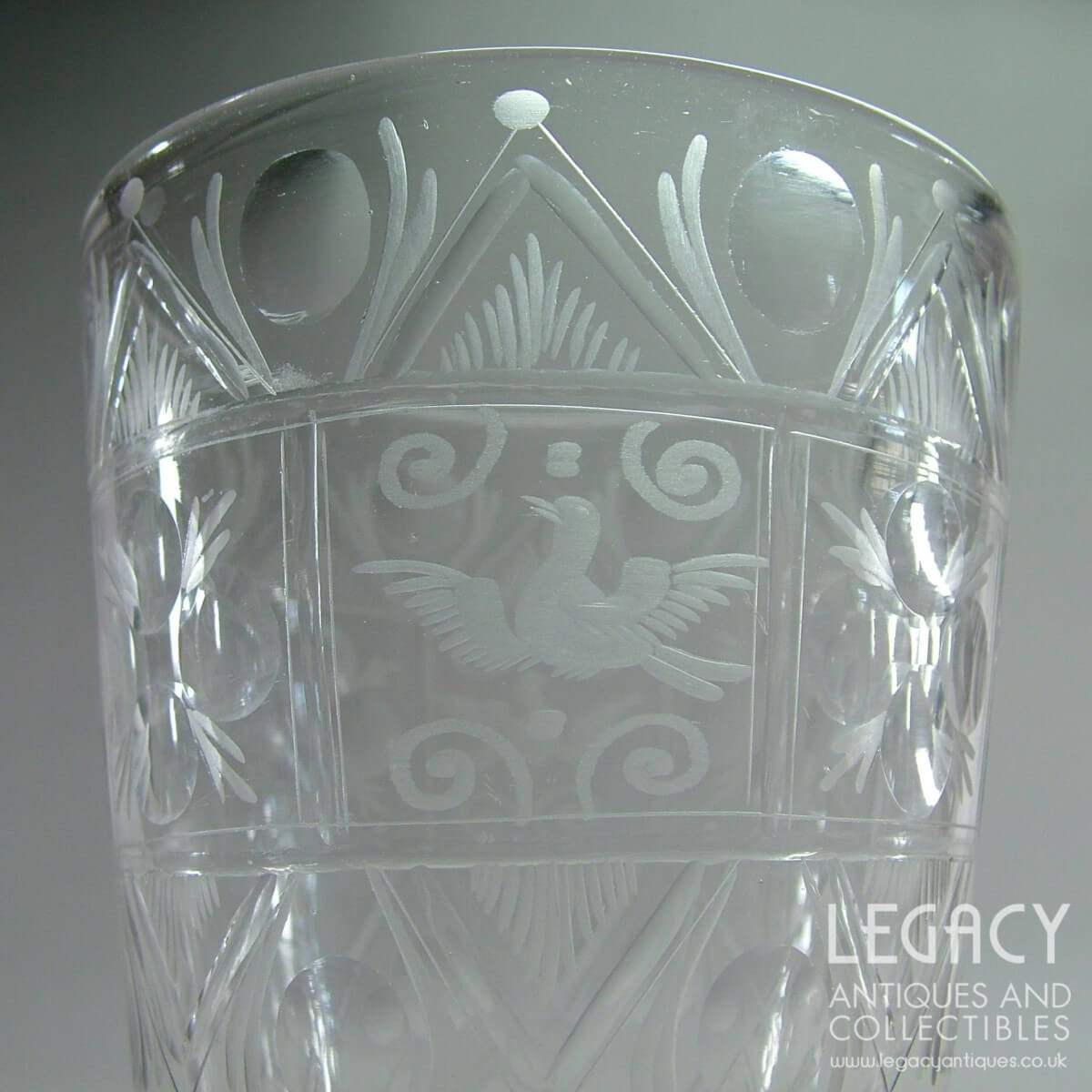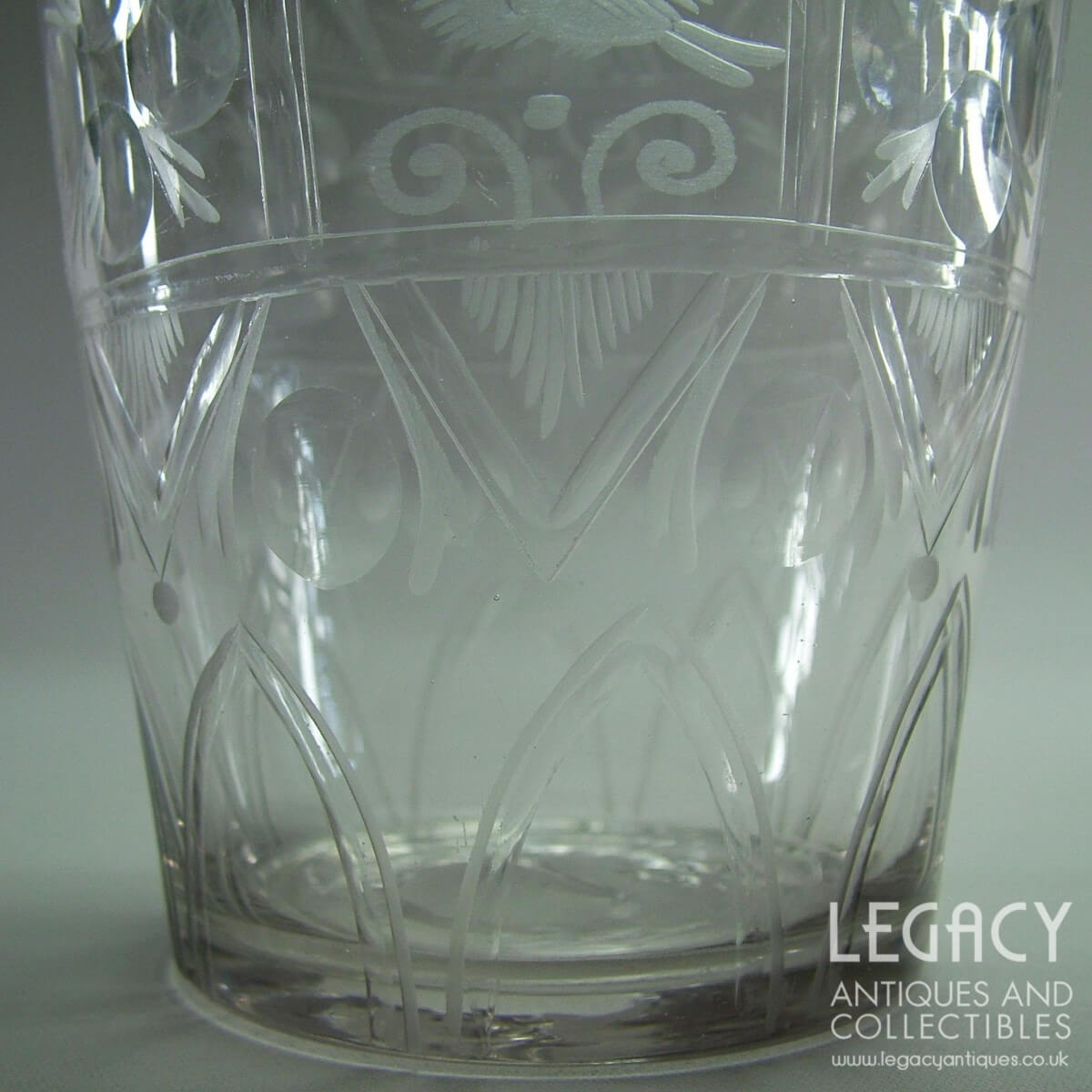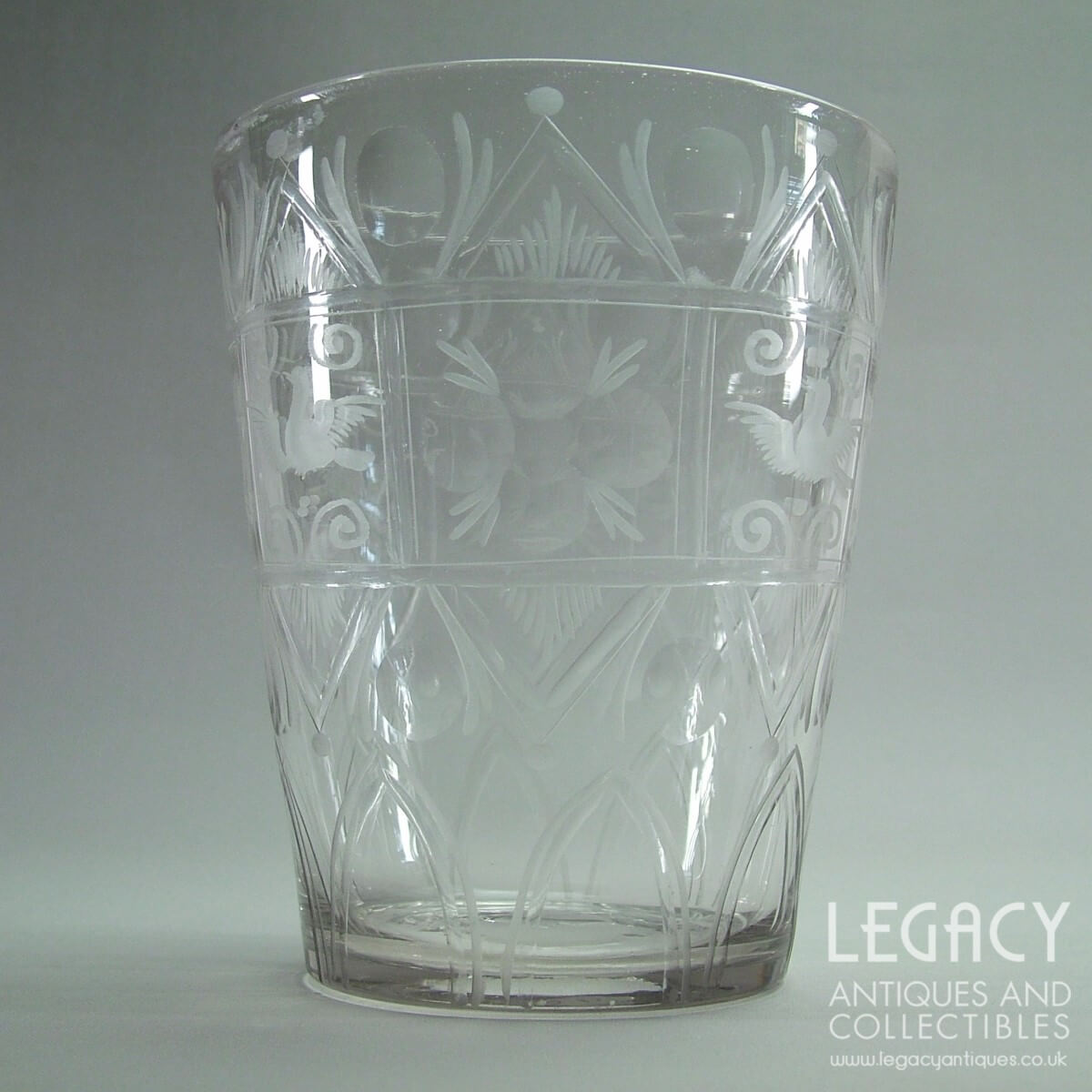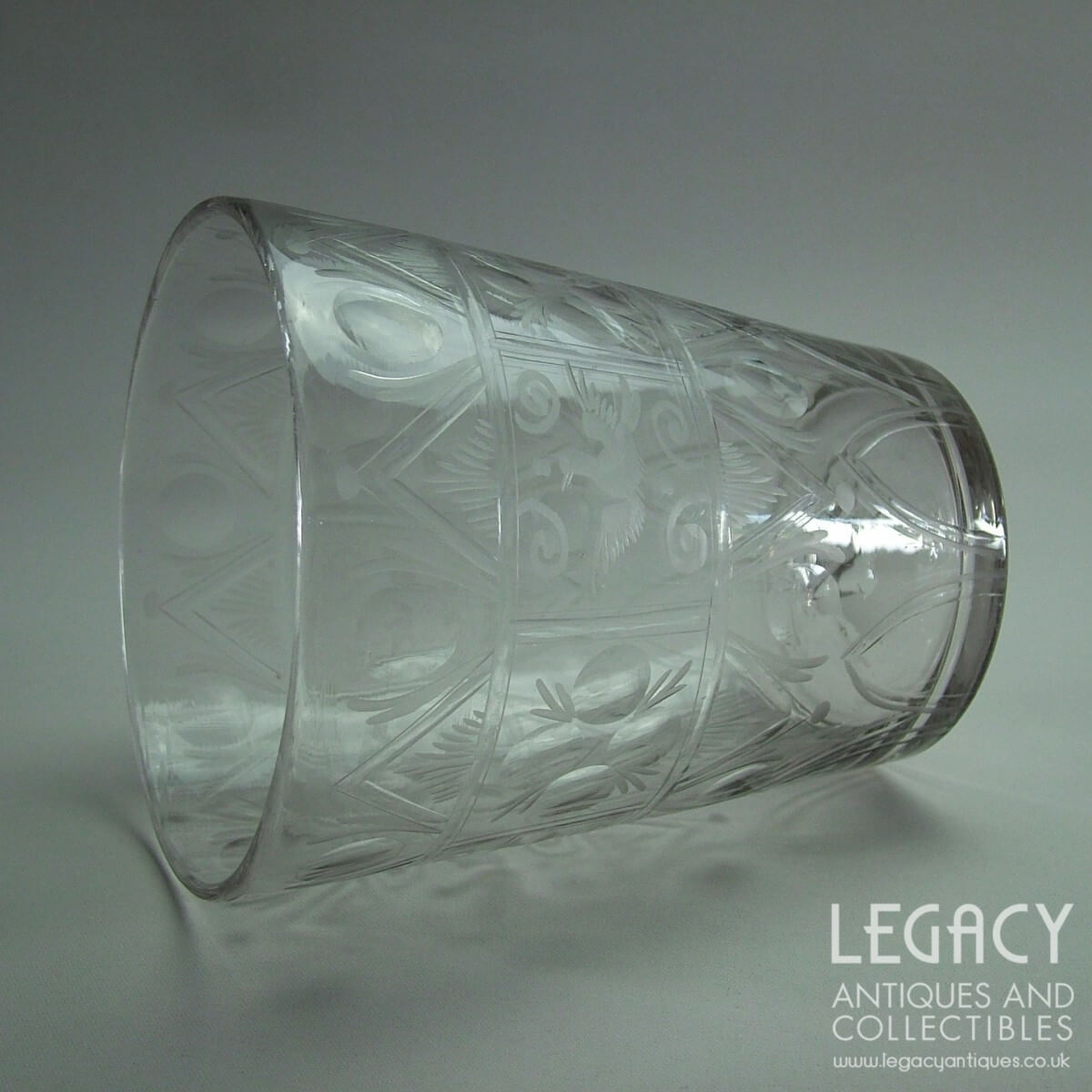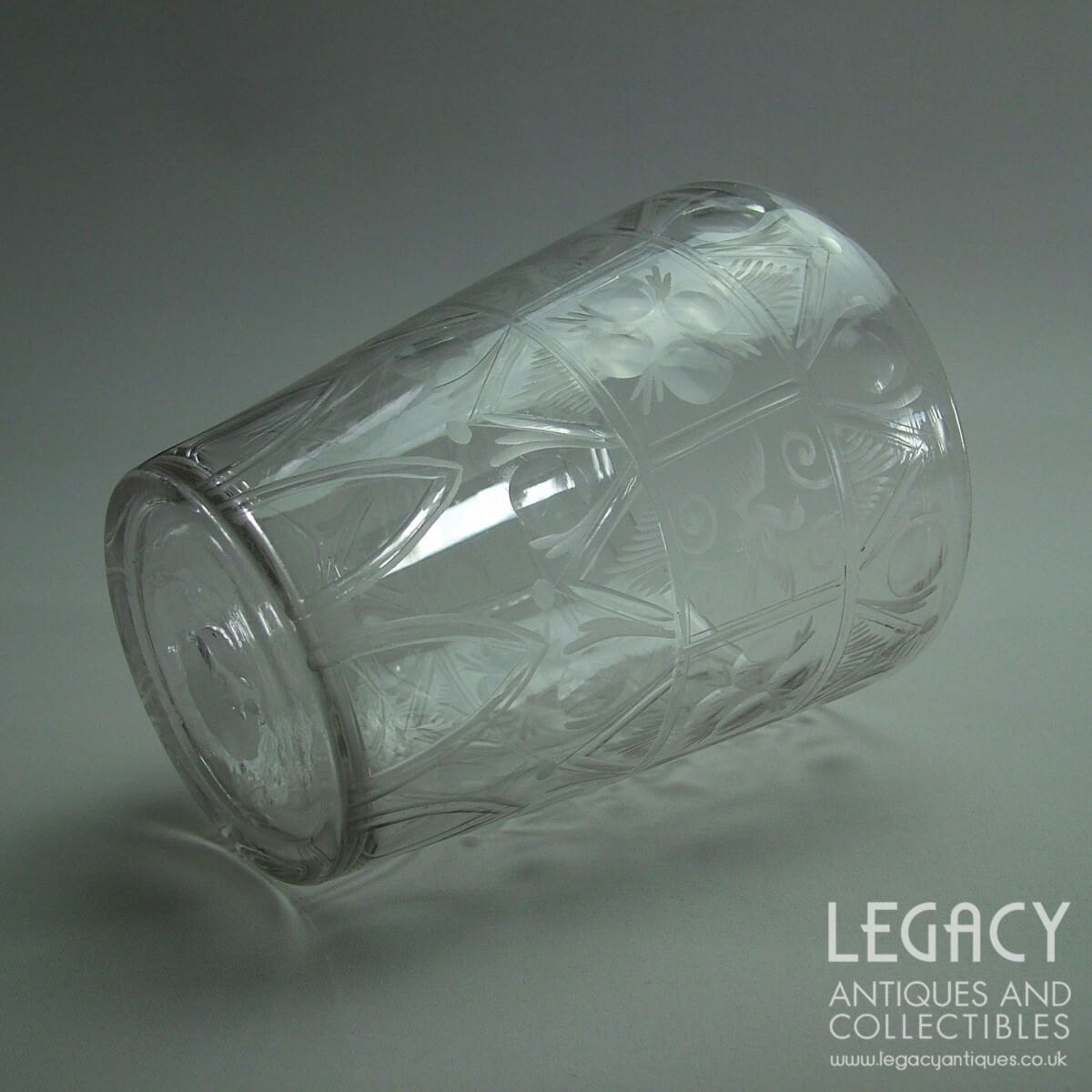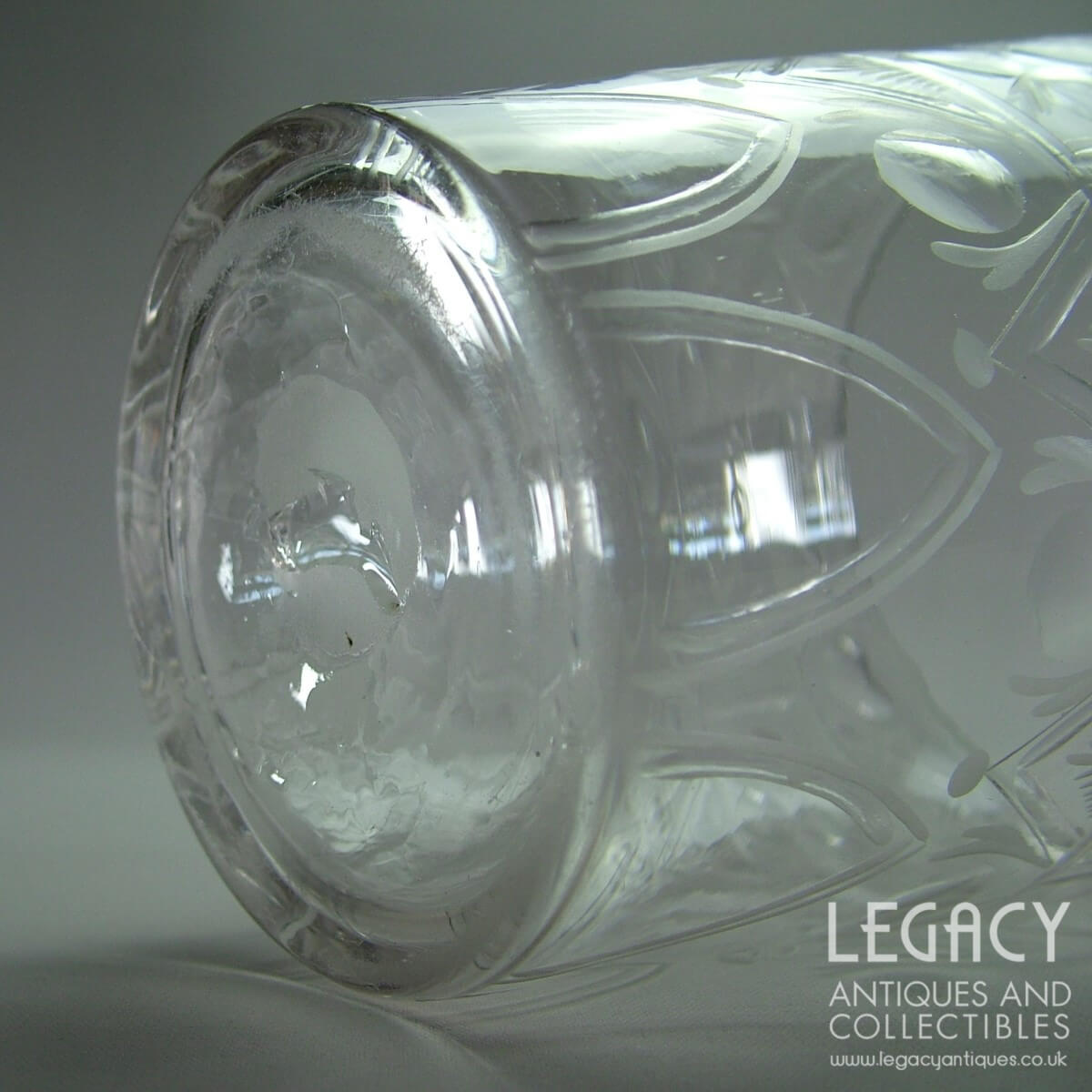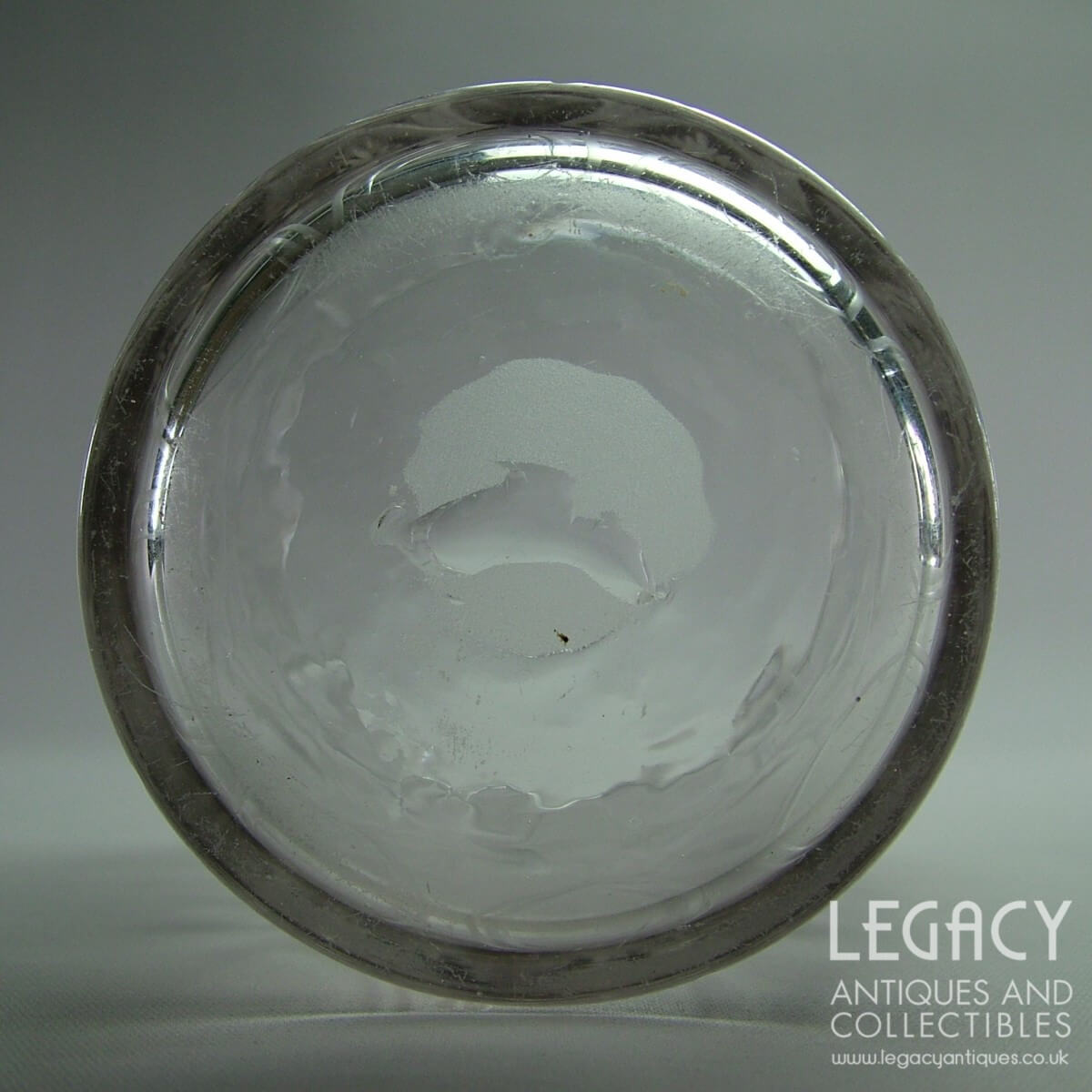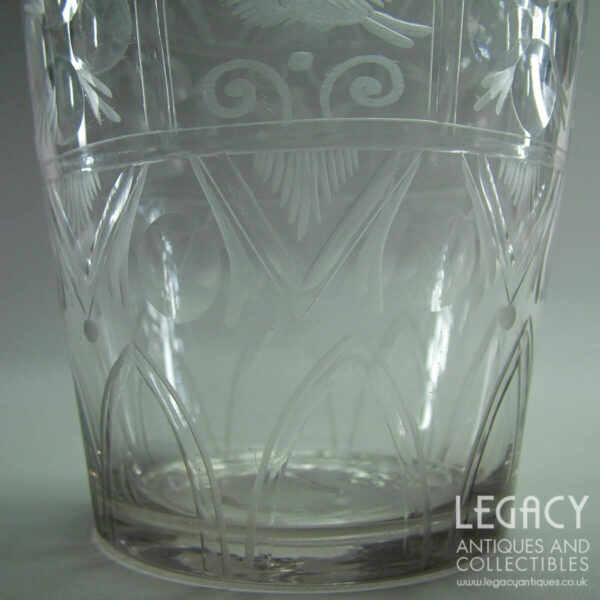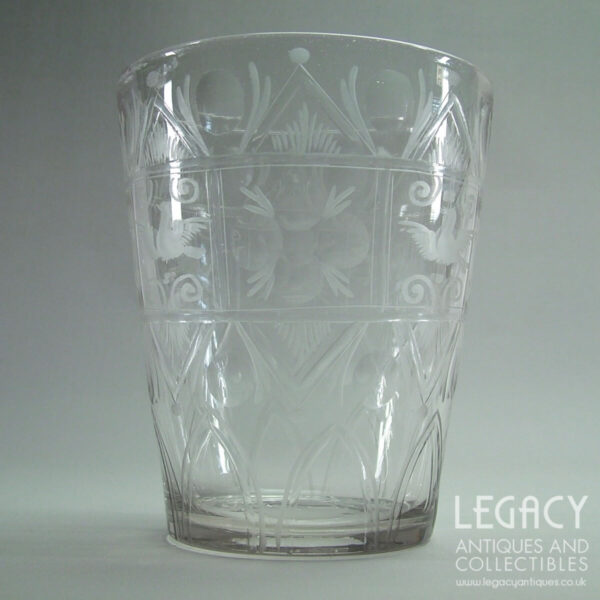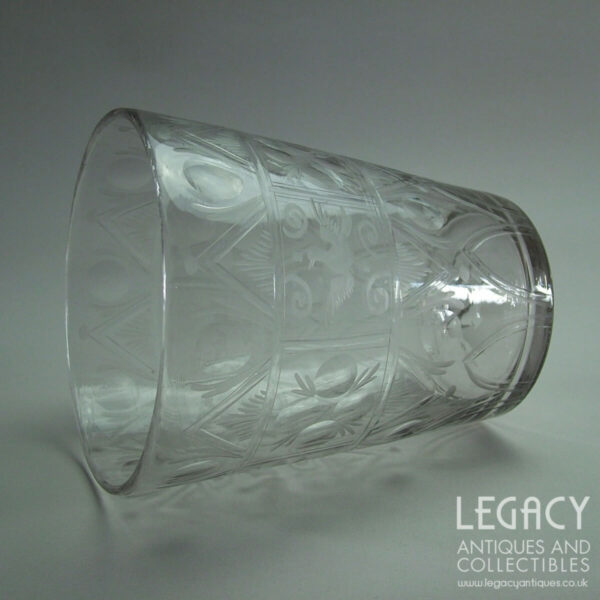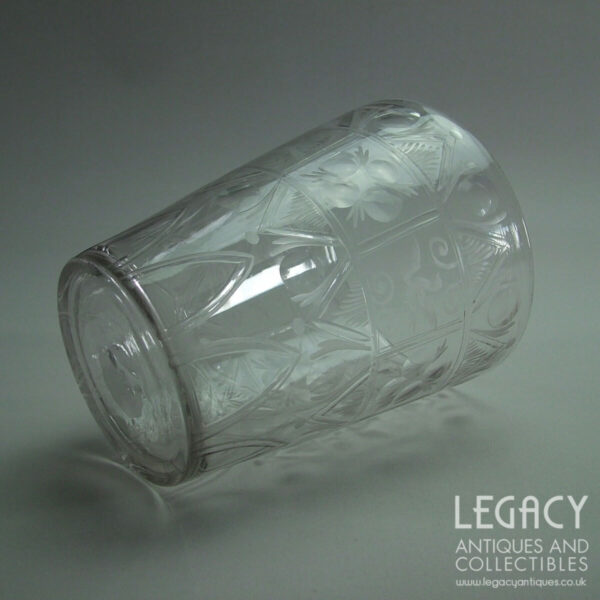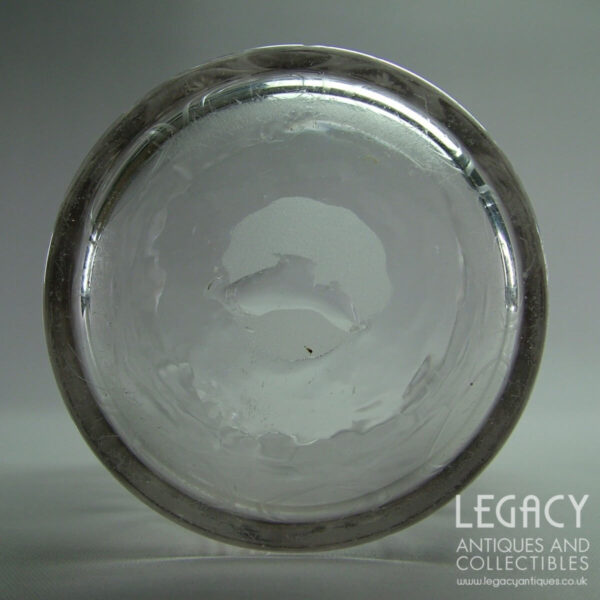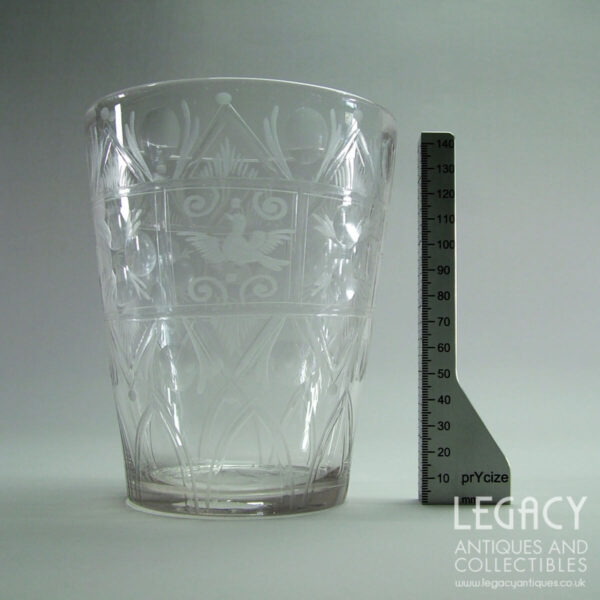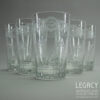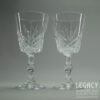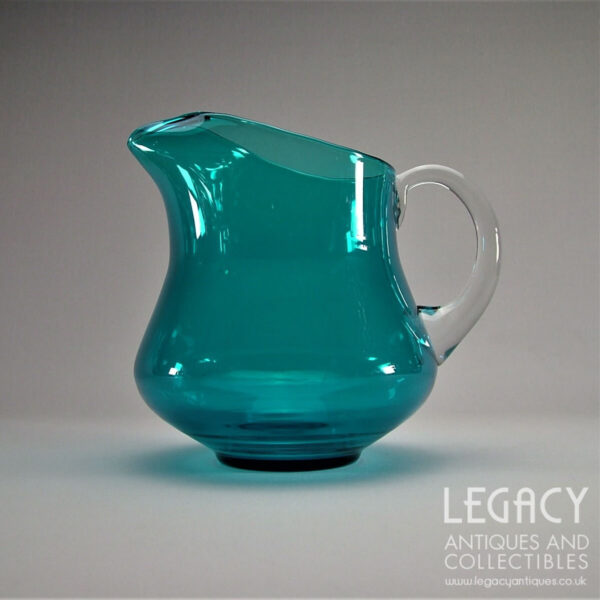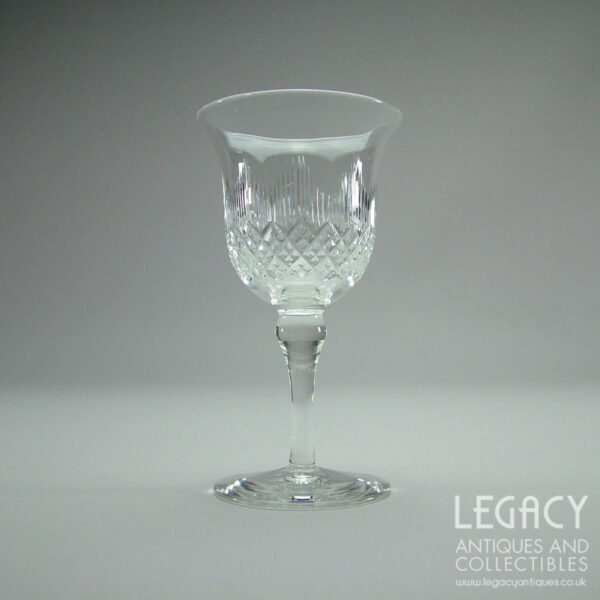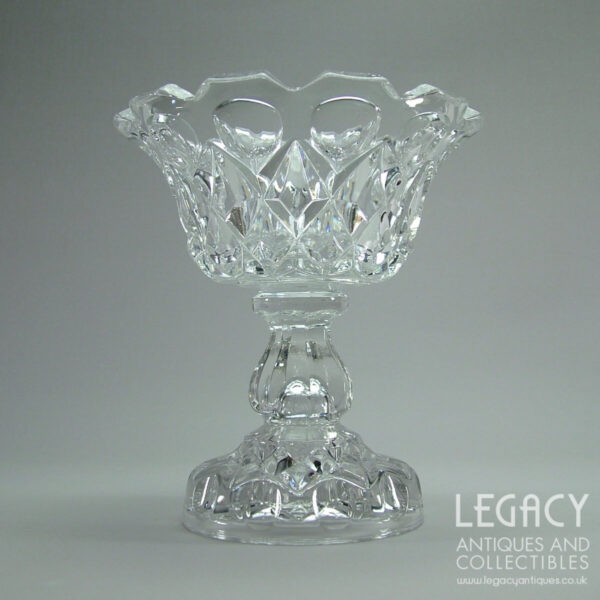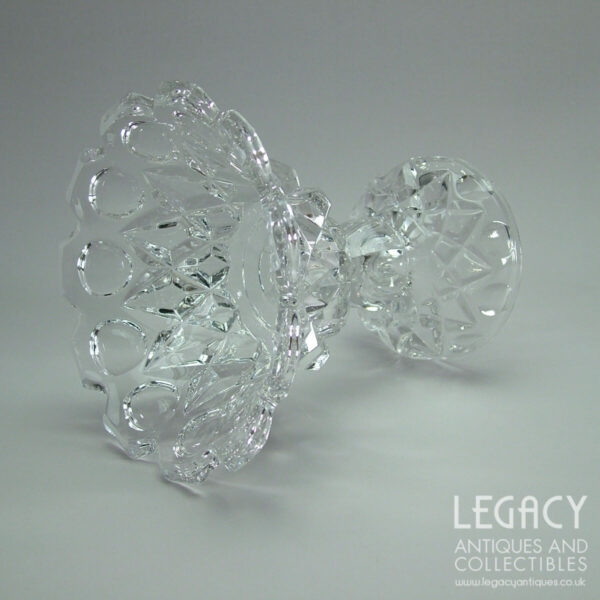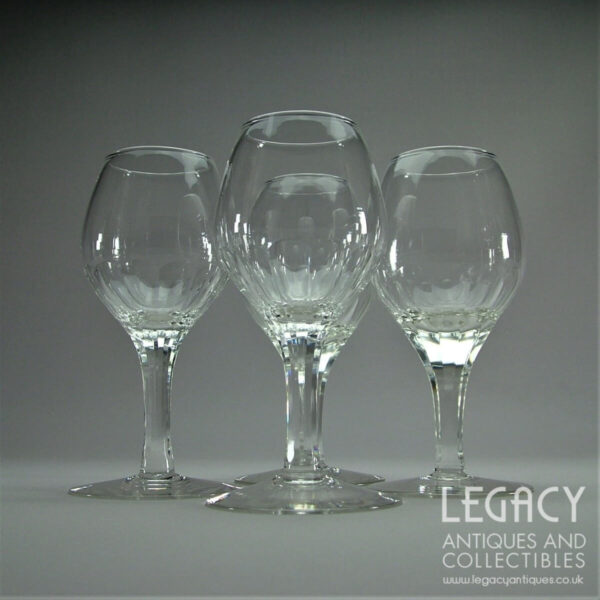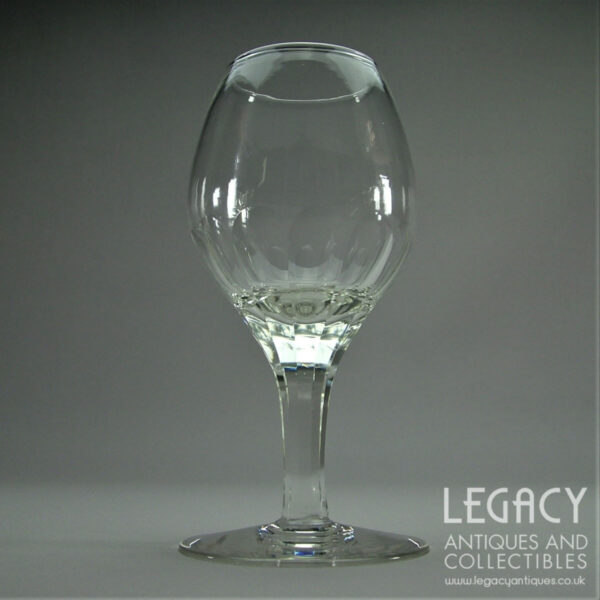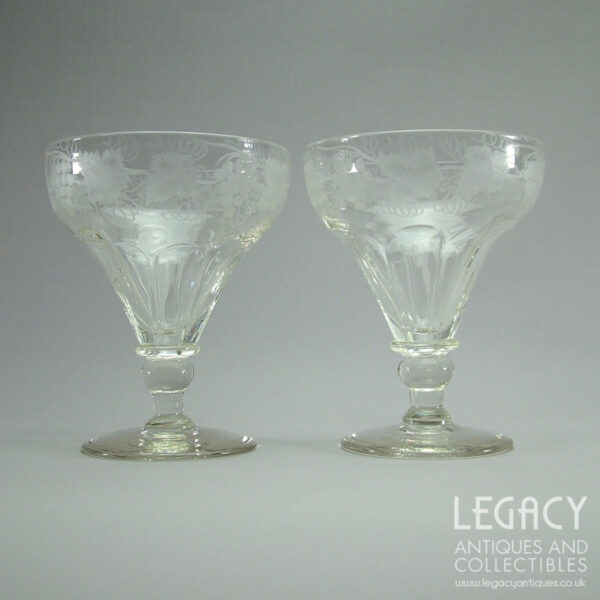Late 18th Century Highly Cut and Engraved Lead Crystal Flip Glass c.1780
£975.00
Free UK shipping
1 in stock
This is a striking and highly unusual example of a flip glass, possibly continental in origin and dating to the latter part of the 18th century.
‘Flip’ first originated in the 17th century and was then served hot. It was generally composed of warmed or mulled ale, which was then added to a mixture of rum or brandy, sugar, spices, and eggs. This drink was then poured or ‘flipped’ between two vessels to combine it well and give it a smooth finish. Lastly, it would be poured into the drinking vessel and a hot poker inserted to heat and froth it even more before serving.
The flip glass is bucket-shaped, tapering in towards the thickened base. It is made from lead crystal with a nice grey tint, common in older specimens.
The body is intricately decorated with a central band containing matte engraved birds and swirls in four panels, alternating with panels containing four lens cuts arranged in a quatrefoil, with matte sprigs between adjacent lenses. Each of these eight panels is bordered above and below by a triangular cut filled with matte engraved lines and bordered with a fine line with a matte dot at the apex. Between adjacent triangles is a large lens cut flanked by matte sprigs.
The lower quarter of the piece is cut with eight arches, each of which is outlined with a matte line.
The base is slightly domed in the centre with a rough finish. There is a lot of wear around the edge of the base commensurate with the age of the piece.
It has a height of approximately 14.9cm, with a diameter across the rim of about 12.7cm and across the base of about 8.8cm.
It has a liquid capacity (to the brim) of 1150ml.
It has an unwrapped weight of 420g.
It is in excellent condition, with no chips or cracks, although there are some striations within the glass and some enclosed air bubbles commensurate with age. There is also the odd scuff within the engraving, probably caused during the decorating process. There are also wear and tear scratches to the exterior and base that are to be expected.
| Weight | 3.5 kg |
|---|---|
| Boxed | No |
| Liquid Capacity | 1000-1500ml |
Related Items
20th Century Glass
Bohemian (Czech) Glass
1930s Bohemian or Czech Large Trumpet Shaped Cut Lead Crystal Flower Vase
19th Century Glass
Late Victorian Moulded Lead Crystal Bowl on Stand or Comport c.1890

